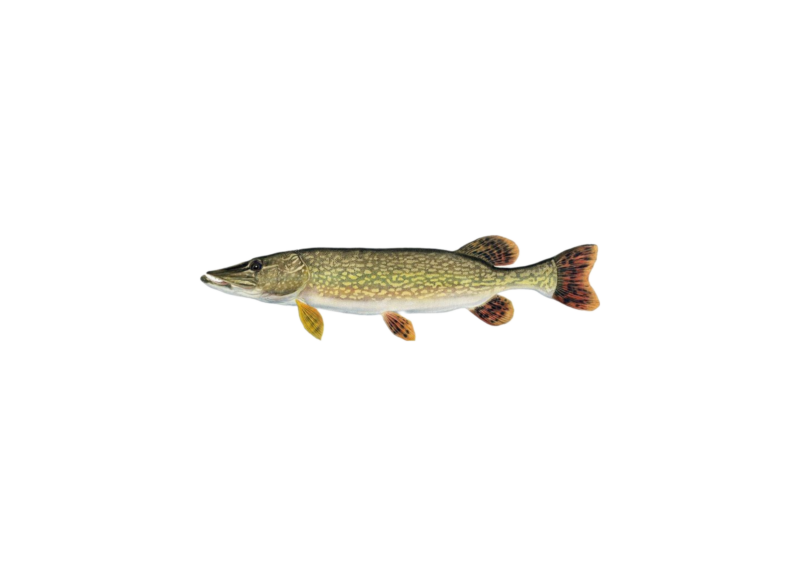Northern Pike: A Fascinating Predator of Freshwater Ecosystems
Description: The northern pike (Esox lucius) is one of the most renowned freshwater fish, known for its aggression, size, and hunting prowess. It boasts an elongated body with a pointed head, typically sporting a green-brown coloration with a white underbelly and distinctive red spots on its tail.
Distribution: Northern pike are found in freshwater systems across Northern Europe, Asia, and North America. They inhabit lakes, rivers, and marshes.
Diet: As voracious predators, northern pike feed on other fish, amphibians, aquatic insects, and even small birds. They are known for their camouflage ability and sudden attacks on prey.
Impressive Size: Northern pike can grow to impressive dimensions. Under optimal conditions, they can reach lengths of over a meter and weigh several tens of kilograms.
Reproduction: Spawning season for northern pike typically occurs in spring. Females deposit eggs on aquatic vegetation or rocky substrates, which are then fertilized by males. Young pike hatch from the eggs after a few weeks.
Sport and Fishing: Northern pike are popular among sport anglers due to their fighting spirit and size. Pike fishing requires specific techniques and equipment, including specialized lures and fishing rods.
Ecological Importance: Northern pike play a crucial role in freshwater ecosystems as apex predators. By controlling the populations of other fish species, pike help maintain ecological balance.
Dietary Importance: While northern pike are popular game fish, they also serve as an important food source in many regions where they are present. Their flesh is considered tasty and nutritious.
Conservation: Pike populations are sometimes threatened by habitat loss, overfishing, or water pollution. Therefore, various conservation and protection measures are implemented, including fishing bans during spawning seasons and habitat preservation programs.
In summary, the northern pike is a fascinating fish that plays a significant role in its aquatic ecosystems and represents an important resource for both anglers and conservation efforts.

Comments